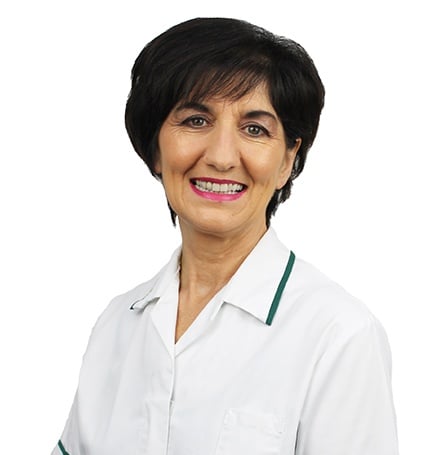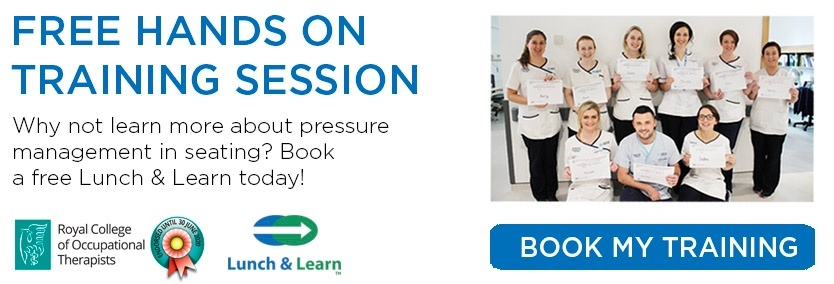A pressure injury is a localised injury to the skin and/or underlying tissue, usually over a bony prominence caused by pressure or pressure in combination with shear. Pressure injuries are a preventable injury and can cause serious health issues to elderly, sick or immobile individuals.
BOOK A FREE TRAINING SESSION TODAY
Martina Tierney, Occupational Therapist and Clinical Director of Seating Matters has dedicated most of her 30 year career to researching the impact of therapeutic seating on the quality of life of patients across the world.
The Four Principles of Pressure Management in Seating are:
- Loading the Body
When you increase an individual’s surface area contact with their chair, you help reduce the pressure exerted through any one point. This is achieved through correct seat dimensions – seat height, depth, width, foot plate height and angle. - Provide Postural Support
Proper support for the patient will help maintain a mid line posture and equalize the distribution of pressure throughout the body. This is achieved through correct seat dimensions plus head, lateral and leg supports. - Effective Repositioning
Guidelines recommend that seated individuals are re-positioned every 2 hours. This helped increased blood flow and the amount of oxygen reaching the skin. Research shows that 45° tilt can maximise the potential for significant blood flow increase and pressure reduction. This is achieved using Tilt in Space. - Use an Appropriate Surface
The Seating Matters cushion is a visco memory foam based cushion coated in Dartex, an anti-shear, multi stretch material. This allows any bony prominences to submerge into the foam, achieving maximum surface area contact and reducing interface pressure. The fact that the material is breathable also helps with their pressure care as moisture is reduced on the skin surface. A medium to high risk memory foam cushion is standard on all our chairs. The cushion is removable to accommodate alternate cushions for higher risk needs
All the Seating Matters chairs have been designed with these features in mind.
Could your team benefit from some training regarding the Four Principles of Pressure Management?
BOOK A FREE TRAINING SESSION TODAY
References:
*Daly, O., Casey, J., Martin, S., Tierney, M. & McVey, O. (2013) The effectiveness of specialist seating provision for nursing home residents, Ulster University.
*These results should not be interpreted as a predictor or guarantee of future financial or clinical outcomes with different patients. Clinicians and users must employ correct decision making, undertake proper assessments, education, comply with local regulations and ensure correct use of equipment. The resulting report from this randomized control trial shows that the study consisted of 38 participants from 3 nursing home settings, who were randomly assigned to control and intervention groups using computer-generated numbers. The study’s results in regard to pressure ulcers has been calculated from the change in pressure ulcers/pressure injuries/skin redness in both the intervention and control group. As a pilot study of a specific nature, it was not blinded. The measurement of pressure ulcers was observational and the analysis of the results included various forms, not including statistical analysis. The study has been reviewed and presented at over 30 academic conferences in 3 continents and is pending publication in a respected peer-reviewed journal.






